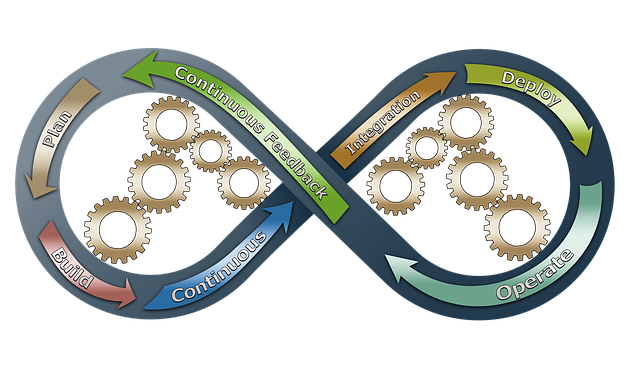This post is also available in:
 Deutsch (German)
Deutsch (German)
“Agile” is becoming a “slow hype”. Originating in IT, where it has turned everything upside down many years ago, the desire to “be agile” is starting to spread into other industries. Especially where feedback cycles are a lot slower than in IT, leaders would like to benefit from the “toolbox” of agile without recreating the entire company culture.
On the other hand, every serious practitioner of agile is going to tell you “agile is an attitude” or some such. Agilists tell you that agile is a mindset, and that that mindset has created a matching toolset, and that the toolset without the mindset has questionable value.
In a sense, both are right. In another sense, both aren’t.
Eventually, the solution has to match the problem. Let’s investigate the two points of view:
Agile is a mindset
People who see agile from this point of view tend to have goals like the following:
To enhance the ability of the organization to take and operationalize decisions timely and consciously to enhance their competitive position.
The goal is competitive position, the means is timely and conscious decisions, and the main obstacle is bringing a decision from the boardroom to the shop floor.
This approach to agility necessarily increases the self-awareness of a business. The entire organization needs to be conscious of these things.
Competitive Position
Everybody needs to understand the competitive position. Not everybody at the same depth, but as a rule of thumb: the more, the better.
Who do we compete with? What are the strengths of our competitors? What are ours? Where are “quick wins” of new competitive advantages?
Once this information starts to spread in an organization, it becomes increasingly easy to motivate the team because there is an answer to the magical question “Why?”
Timely and Conscious Decisions
Managers and/or leaders pride themselves to be “decision takers”. And they can’t be that bad at it, or they wouldn’t have that job. Still, “crunch times” happen every once in a while, and unless you see “crunch times” as something as inevitable as death and taxes (they are not), you’d conclude that they are a symptom of a delayed decision.
In fact, it turns out that it is very hard to assess the timeliness and awareness of non-standard decisions. There are standard procedures for, say, deciding on credit rating. But when unique decisions come around, say, an adjustment of a standard offering – how timely, how consciously are such decisions taken?
From the Boardroom to the Shop Floor
Decision theory says: “A decision is an irreversible commitment of resources.”
With any experience in the real world you will think something like: well, that’s easier said than done. For many organizations, to change what they are doing is like running into a brick wall. Some say that has to do with human nature: people don’t like change. Upon closer inspection, some people handle change better than others. But no one likes change that is imposed on them from the outside. On the other hand, as a rule of thumb, people like to grow, people like to improve (even though many people have been conditioned away from that passion). There can be as much of an experience of success in learning something new as there is in completing a project – IF there is enough autonomy involved.
Agile work tries to move the power to take a decision as closely as possible to the “bleeding edge” – the people with hands-on experience. Improvements are the supreme art of the people doing the work day in and day out. In that way, step changes are replaced with continuous adaptation, “continuous improvement” as it’s called. It simplifies the life of the people in charge of the improvements, and as a side effect it reduces the necessity for top-down decisions.
Agile is a toolset
While some hardcore agile folks will likely disagree with that, the agile mindset has also created a toolset that can be used for other purposes.
A typical goal for agile tools in a “traditional” mindset could be to increase margin (margin is good for stakeholders, but is in and of itself independent of the competitive position). In fact, most typical economic goals fall into this category.
There are many, many companies that have neither the necessity nor the maturity to educate and involve the entire organization on competitive position. Especially where tangible goods are being created it may be good enough for top management to understand and translate competition into operational measures and use agile tools as decisions are being operationalized. If it ain’t broke, don’t fix it.
Different Logical Levels
Whether you see agile as a mindset or a toolset basically comes down to which logical levels you want to see them on.
Robert Dilts has come up with a pyramid like this to describe learning. Explaining this pyramid in detail explodes the scope of the present article.

In very short:
- “Identity” deals with “who”
- “Values and Beliefs” deals with “why”
- “Capabilities” deals with “how”
- “Behaviour” deals with “what”
- and “Environment” deals with “where and when”
With that pyramid at our disposal, the question of “toolset” or “mindset” boils down to: Do I want to become agile on the level of “values and beliefs”, or is the level of “capabilities” good enough?
If you are sure of your competitive position for the foreseeable future, there is no need to integrate agile into your values and beliefs. It is good enough to see agile as a toolset on the capabilities-level.
Else…
